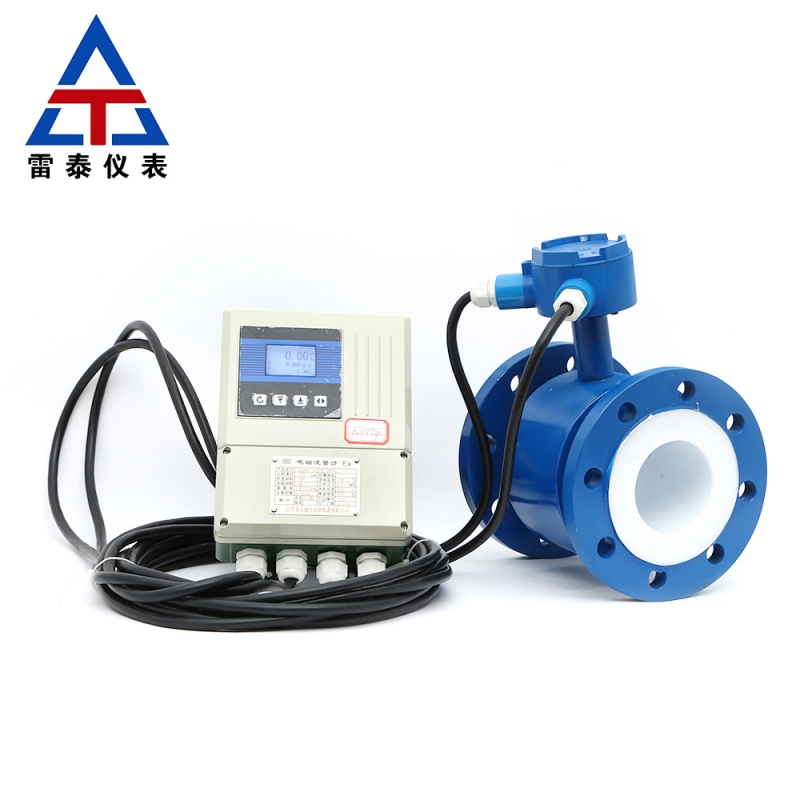1.Installation requirements
①Installation position: It should be selected on the straight pipe section. The length of the front straight pipe section is generally required to be no less than 5 times the pipe diameter, and the length of the rear straight pipe section is no less than 3 times the pipe diameter to ensure that the fluid fully develops in the measuring pipe and reduce the impact of flow state on measurement accuracy. At the same time, it is necessary to avoid installation at the outlet of the pump to prevent fluid pulsation and impact from affecting the measurement.
②Installation method: The sensor can be installed horizontally, vertically, or obliquely, but it is necessary to ensure that the measuring tube is always filled with the measured liquid. When installed vertically, the fluid should flow from bottom to top; When installed horizontally, the electrode axis should be in a horizontal position to prevent bubbles from accumulating on the electrode and affecting the measurement.
③Grounding requirements: The split type electromagnetic flowmeter must be well grounded, with a grounding resistance of less than 100 Ω. The grounding terminal of the sensor should be reliably connected to the grounding grid through a grounding wire to prevent external electromagnetic interference from affecting the measurement signal.
① Caliber selection: Select the appropriate flowmeter caliber based on the inner diameter of the measured pipeline and the expected maximum flow rate. Generally, the rated flow rate of the flowmeter should be slightly higher than the actual maximum flow rate to ensure measurement accuracy and reliability.
② Material selection : Select appropriate measuring tubes, electrodes, and lining materials based on the properties of the measured medium. For corrosive media, materials with good corrosion resistance should be selected; For abrasive media, materials with good wear resistance should be selected.
③Accuracy level: Choose the appropriate accuracy level according to actual measurement requirements. Generally, flow meters with an accuracy of ± 0.5% or ± 1.0% can be selected for industrial measurement. For situations with higher accuracy requirements, higher precision products can be selected.
④Output Signal : Select the appropriate output signal type according to the user's needs, such as 4-20mA analog signal, pulse signal, digital signal (such as RS485, HART, etc.), in order to connect and communicate with other devices or systems.
3. Maintenance and upkeep
① Regular inspection : Regularly check the appearance of the flowmeter for damage, corrosion, and other issues, and inspect the connecting cables for damage, aging, and other problems. At the same time, it is necessary to check the working status of sensors and converters, check whether the displayed data is normal, and whether there are any alarm messages.
② Cleaning and maintenance : Regularly clean the measuring tube and electrode surface of the sensor to prevent dirt, impurities, etc. from adhering to them and affecting measurement accuracy. For sensors with lining, it is important to avoid mechanical damage and chemical corrosion to the lining.
③ Calibration and Verification : Regularly calibrate and verify the flowmeter according to usage and relevant standard requirements to ensure that its measurement accuracy always meets the requirements. Calibration can be carried out using methods such as real flow calibration or dry calibration, usually by professional metrology institutions or manufacturers.
We specialize in producing electromagnetic flowmeter, vortex street flowmeter, turbine flowmeter, thermal gas mass flowmeter, metal tube rotameter, orifice flowlmeter, ultrasonic flowmeter, verabar flowmeter, target type flowmeter, magnetic level indicator, differential pressure transmitter, etc.




